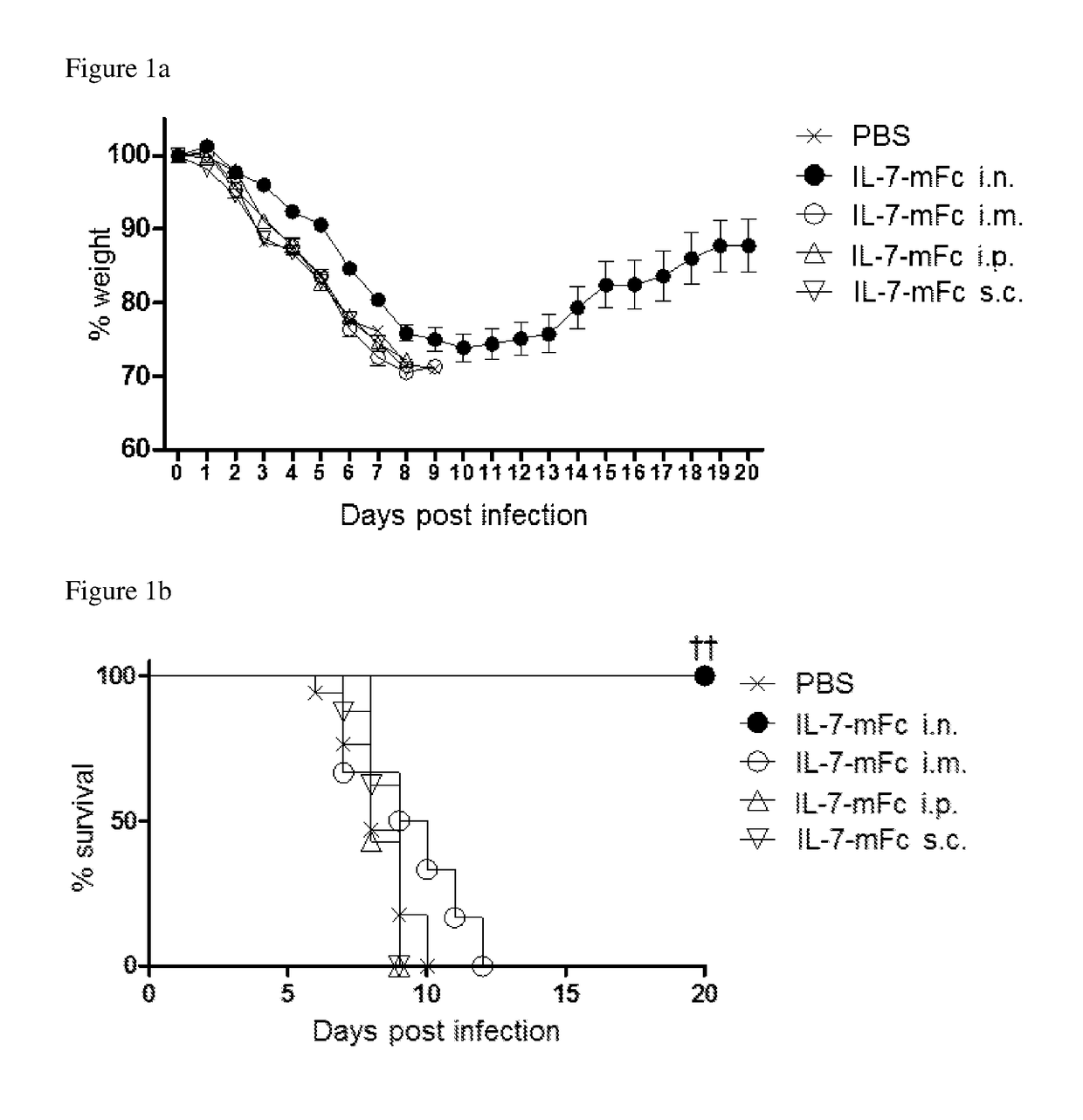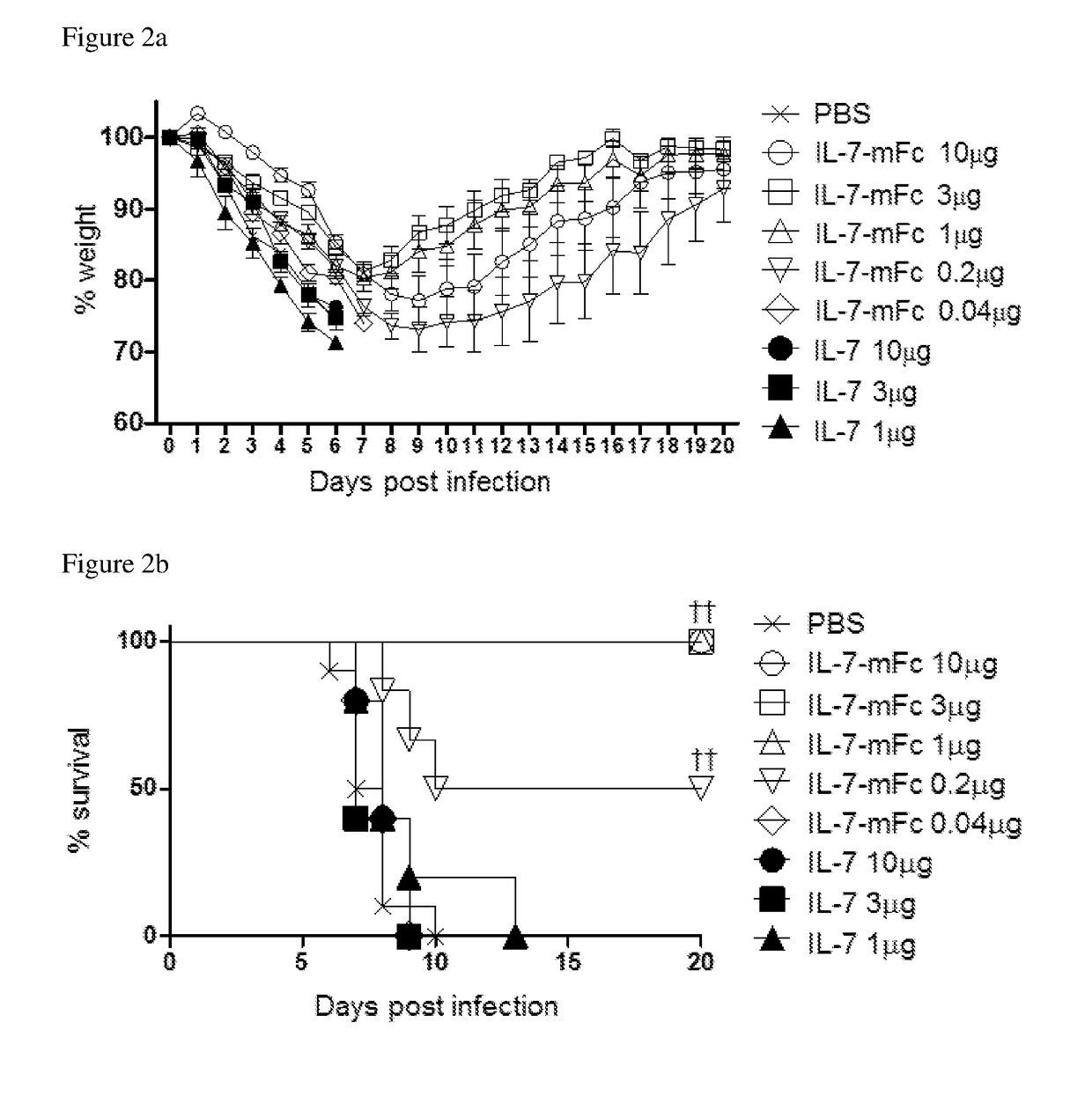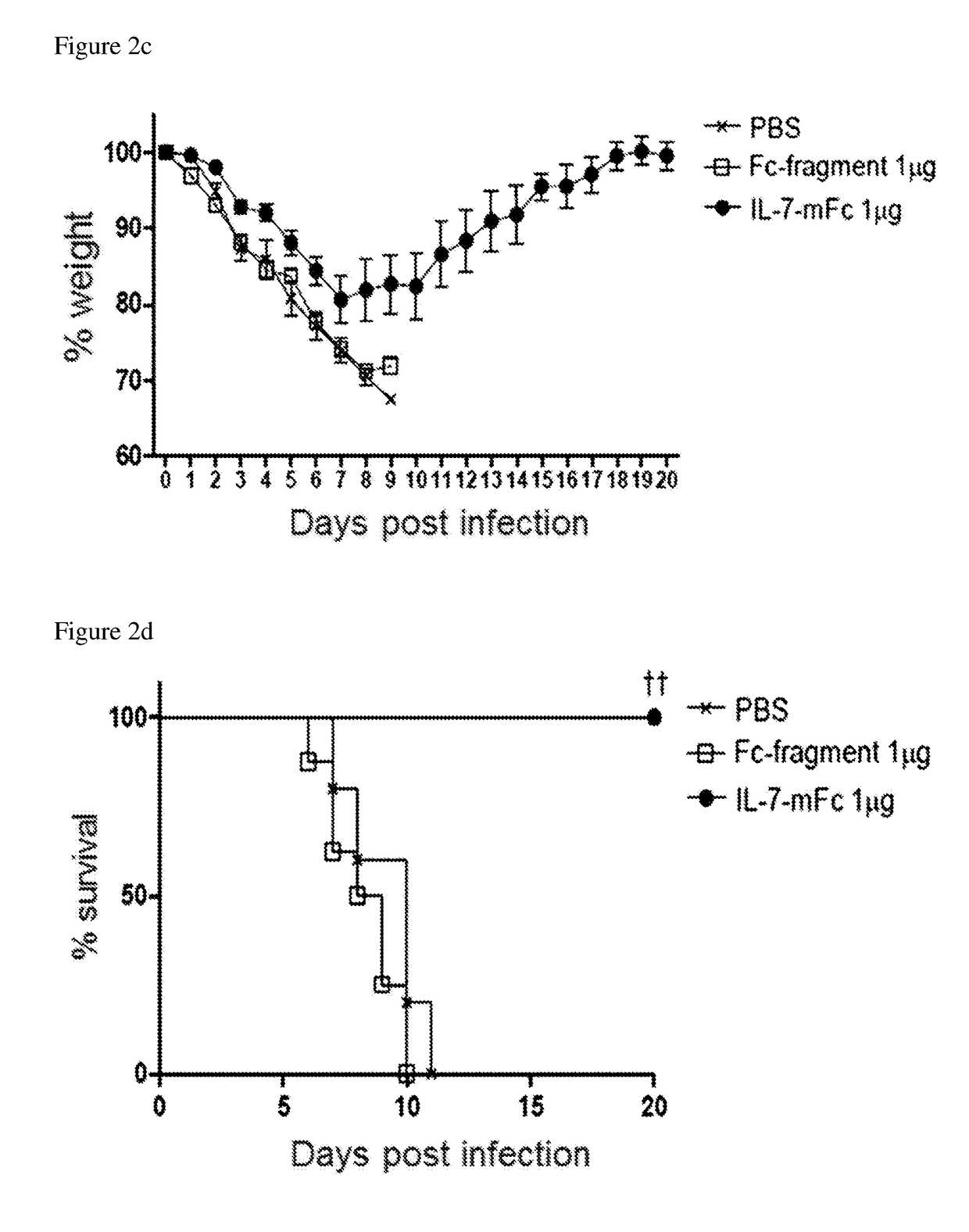Pharmaceutical composition comprising immunoglobulin fc-fused interleukin-7 fusion protein for preventing or treating infection from influenza virus
a technology of interleukin-7 and composition, which is applied in the direction of drug composition, peptide/protein ingredients, respiratory disorders, etc., can solve the problems of low productivity, low efficacy, and difficulty in timely production of vaccines against new antigens found in mutant viruses
- Summary
- Abstract
- Description
- Claims
- Application Information
AI Technical Summary
Benefits of technology
Problems solved by technology
Method used
Image
Examples
preparation example 1
mental Animals
[0061]BALB / c, BALB / c-nude, C57BL / 6, and FcRn− / − mice used in the following examples were purchased from the Jackson Laboratory (Bar Harbor, Me., USA) and raised under specific pathogen-free conditions in an approved animal facility at POSTECH Biotech Center and International Vaccine institute (Seoul, Korea). All mouse experiments were performed in accordance with National Institutes of Health guidelines, and protocols were approved by the Institutional Animal Care and Use Committee (IACUC).
preparation example 2
nd Antibody Administration Method
[0062]The murine non-lytic Fc fused IL-7 and non-lytic Fc fragment were prepared (Kim E S et al., 2013, Nanoscale 5:4262-4269). Recombinant human IL-7 (IL-7) used in the following examples was purchased from Shenandoah Biotechnology (Warwick, Pa., USA). A mixture of ketamine (100 mg / kg; Yuhan, Korea) and xylazine hydrochloride (10 mg / kg; Bayer, Belgium) in PBS was administered to the mice intraperitoneally to anesthetize, and then, 50 μl of PBS including predetermined cytokine was administered to the mice via indicated routes with a micropipette or syringe. The depletion monoclonal antibodies (mAbs) against mouse CD4 (GK1.5), CD8 (2.43), Vγ2 (UC3-10A6), and polyclonal rat IgG were purchased from Bioxcell (West Lebanon, N.H., USA). 200 μg of each depletion mAb was administered to the mice intraperitoneally at −1, 0, 1, and 4 days of post-IAV infection.
preparation example 3
itration
[0063]Influenza strains H1N1 (A / Puertorico / 8 / 34) and H5N2 (A / aquatic bird / ma81 / 2007) used in the following examples were kindly provided by Young Ki Choi from Chungbuk National University of Medicine (Korea). Mice adapted to H5N2 were generated by passaging the H5N2 (A / Aquatic bird / Korea / W81 / 05) (Song M S et al., 2009, Journal of virology 83:12325-12335). At the predetermined time point after IL-7-mFc treatment, mice were anesthetized and infected intranasally with 3 LD50 of PR8 or H5N2. Experiments using H1N1 (A / California / 04 / 09) and H3N2 (A / Philippines / 2 / 82) were performed with the aid of International Vaccine Institute (Korea). Body weight change and survival were monitored daily and groups with more than 50% of dead mice were excluded from the body weight graph. Mice that lose weight more than 30% with respect to their initial body weight were euthanized.
[0064]To measure virus titers, total lung homogenate samples of 3 and 7 days after infection, which were diluted 4 tim...
PUM
| Property | Measurement | Unit |
|---|---|---|
| Structure | aaaaa | aaaaa |
Abstract
Description
Claims
Application Information
 Login to View More
Login to View More - R&D
- Intellectual Property
- Life Sciences
- Materials
- Tech Scout
- Unparalleled Data Quality
- Higher Quality Content
- 60% Fewer Hallucinations
Browse by: Latest US Patents, China's latest patents, Technical Efficacy Thesaurus, Application Domain, Technology Topic, Popular Technical Reports.
© 2025 PatSnap. All rights reserved.Legal|Privacy policy|Modern Slavery Act Transparency Statement|Sitemap|About US| Contact US: help@patsnap.com



